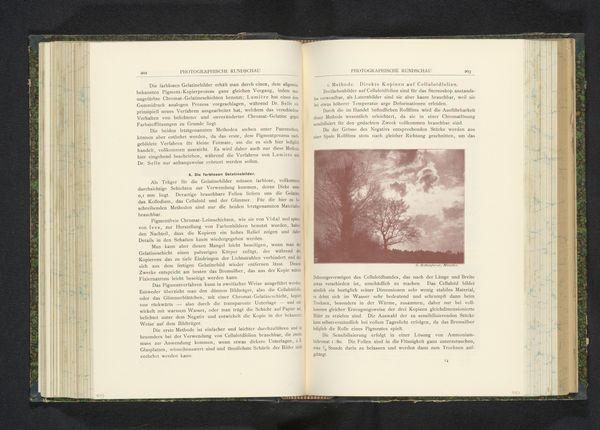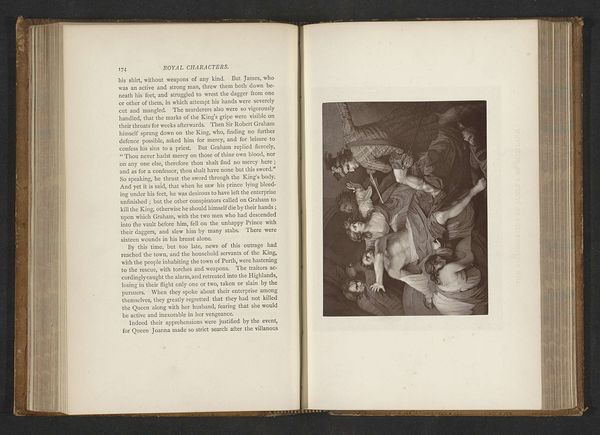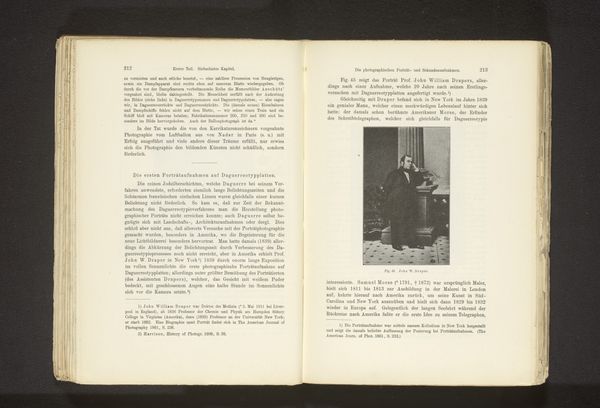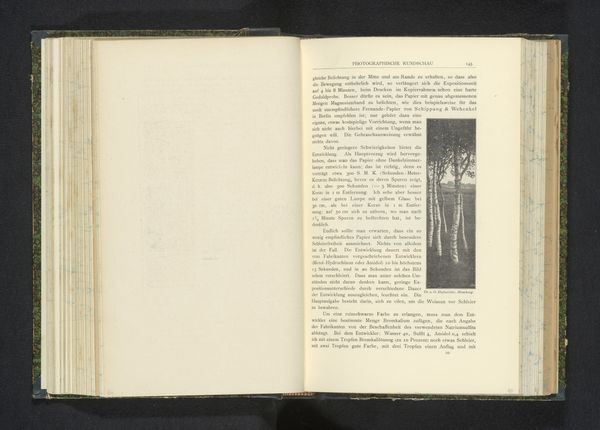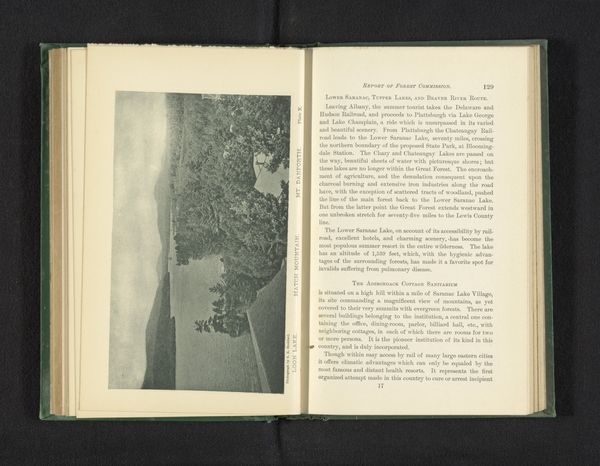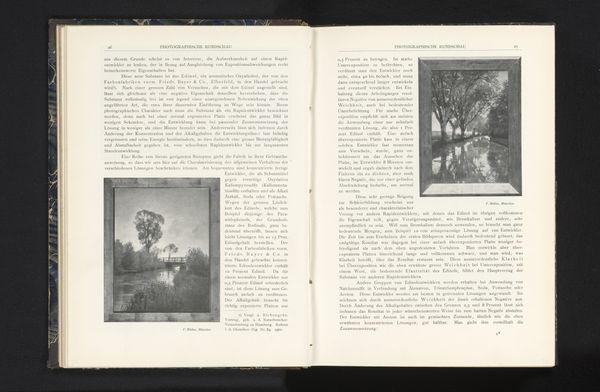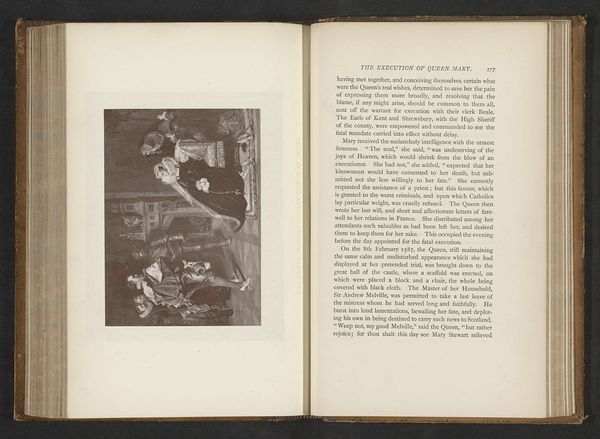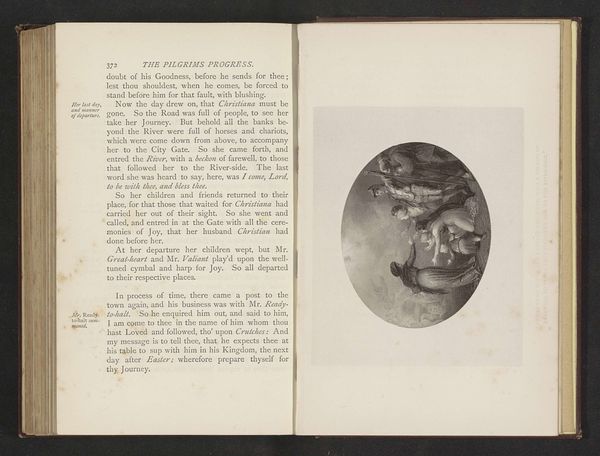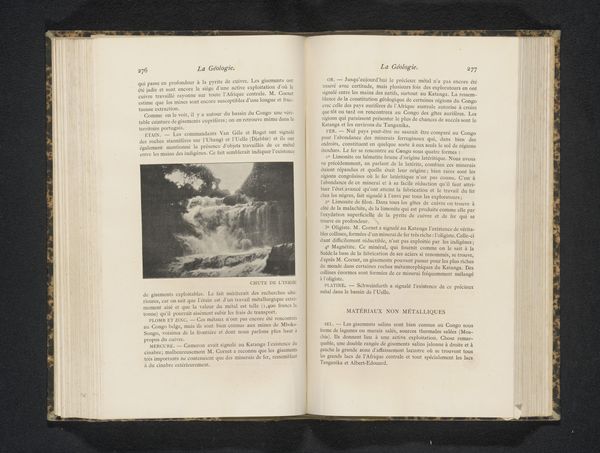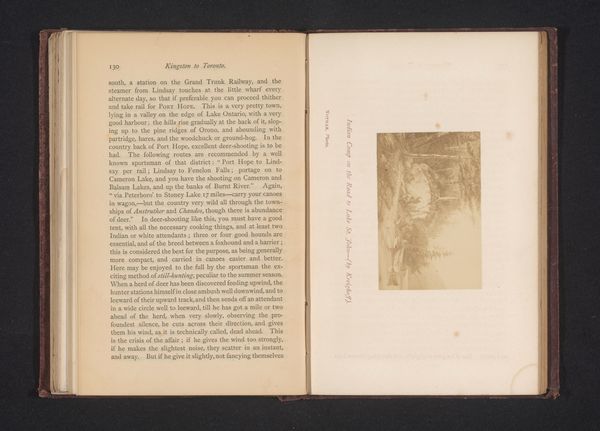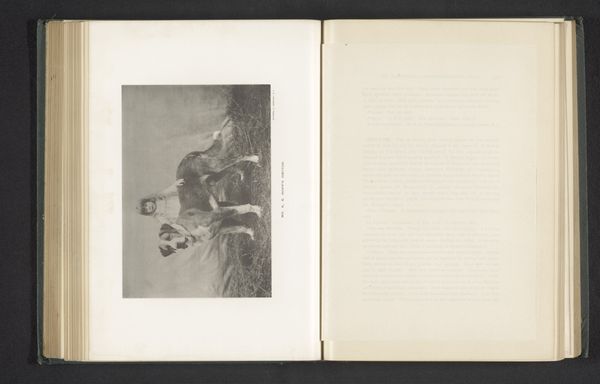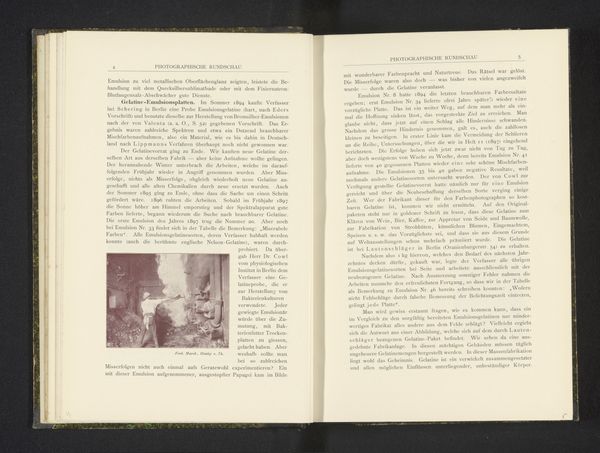
graphic-art, print, photography, albumen-print
#
portrait
#
graphic-art
#
still-life-photography
# print
#
book
#
photography
#
albumen-print
Dimensions: height 116 mm, width 75 mm
Copyright: Rijks Museum: Open Domain
Curator: Here, we see a page from an old photography journal featuring an albumen print titled "Portret van een onbekende man gekleed als edelman," created sometime before 1899 by C. Suhrlandt. The book itself becomes both context and frame for the photographic print it holds. Editor: It’s quite striking, almost theatrical in its presentation. The stark sepia tones and the antiquated typography lend an air of staged elegance. What's interesting is how the book itself emphasizes photography as a technical craft presented for instructional use, a medium still very much in development and exploration. Curator: Absolutely. Considering its inclusion in this journal, the material aspects of its creation—the printing process, the paper, the binding—all speak to a wider culture of photographic practice, documentation, and exchange happening at the time. What choices of the material does the use of the albumen print impact when we consider image preservation? Editor: I'm particularly drawn to the presentation of the unknown man. His dress positions him socially, yes, but there is an inherent irony. Dressed as nobility in the space of the studio allows the bourgeois sitter the illusion of access into noble culture through performance. This makes me wonder about the identities photography served during that era and the societal impact. Curator: A valid observation, and one further reinforced by the very material reality of this print's existence as a reproductive technology accessible through widely disseminated texts like these. The very act of replicating this portrait across a broad readership challenges rigid social structures in novel ways. And in seeing how it lays on the page within the journal helps explain what the technology could do. Editor: Precisely. This interplay—the elite aspirations captured and made accessible, the social commentary inherent in that paradox, all amplified by the medium’s burgeoning technological possibilities—makes the work so potent. The print isn’t just an image, it is both the end product and advertising for both studio and product that the viewer might access for their own ends. Curator: Examining the material history here really gives you a much deeper view, doesn't it? The processes, publications and printing techniques highlight the work’s embeddedness in a wider field of early photography. Editor: Indeed. Reframing the artwork through the sociopolitical factors—who, what, and why it's on display—really invites us to reconsider photography and its use as an act of self determination within rigid society structures of class and power during the late 19th century.
Comments
No comments
Be the first to comment and join the conversation on the ultimate creative platform.
